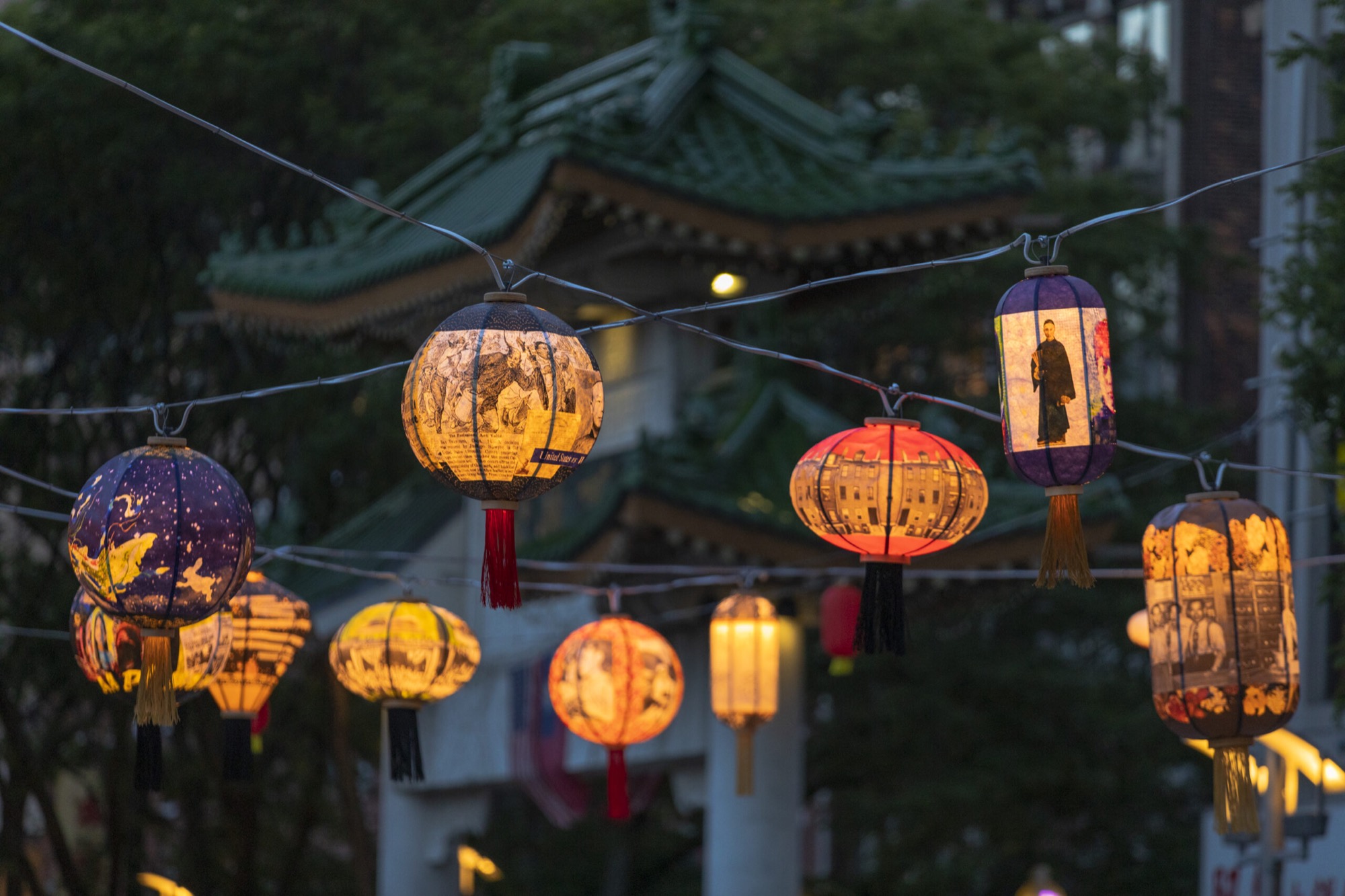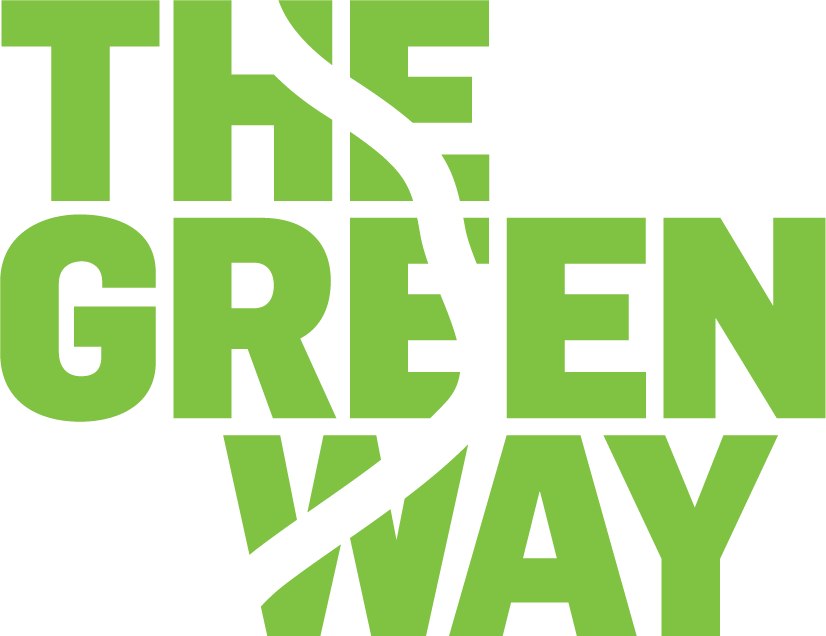
Lantern Stories celebrates the past, present, and future of Boston’s vibrant Chinatown community.
Lanterns represent light and guide the way forward, illuminating darkness and uncertainty. From their beginnings as candle flames surrounded by bamboo, silk or paper, lanterns have become an integral part of celebrations that foster hope and pave the way to a brighter future. Featuring colors important to Asian and Asian American cultures, the lanterns symbolize happiness and good fortune (red) and prosperity (gold).
Originally created as a series of thirty-one lanterns in 2020, artist Yu-Wen Wu returned to Lantern Stories in 2022, updating the artwork to reflect the realities of the current moment, while still centering Boston Chinatown’s history of immigration, its culture, and resiliency. The images on the lanterns relate the long and fraught history of Chinese immigration in the United States. From early arrivals during the California Goldrush in the 1850’s, to the unprecedented events of the past few years, the lanterns share visual stories of how Asian Americans have confronted inequities on multiple levels. Other lantern images celebrate culture, art, calligraphy, music and performance, as well as the community’s strong commitment to education, entrepreneurship, and social justice.
Through the creation and inclusion of 5 new lanterns featuring the work of Boston and San Francisco-based artists, Lantern Stories’ expands its focus beyond Boston’s Chinatown to explore the impact of Asian American communities nationally, particularly around areas of civil rights.
For Lantern Stories 2022, Yu-Wen Wu created new imagery for three of her previous lanterns: Lions, Stop Asian Hate, and Exclusion Act. In addition, nominated artists from Boston and San Francisco lent their artwork to the creation of five brand new lanterns, yielding works from Yuko Okabe (Boston), kathy wu (Boston), and Christine Wong Yap (SF); Fred Liang (Boston), Lucy Kim (Boston), and Summer Mei Ling Lee (SF); Joanna Tam (Boston) and Lenora Lee (SF); Ponnapa Prakkamakul (Boston) and Cathy Lu (SF); and Phillip Hua (SF) and Wen-ti Tsen (Boston). She hopes to create more collaborations between Chinatown communities in other cities with additional lanterns in the future.
With the re-installation of Lantern Stories 2022 in Boston as well as a new iteration of the project in San Francisco, Wu’s work generates unique opportunities for bicoastal dialogue on immigration histories, social justice issues, and the exchange of these communities’ stories and the arts.
《燈籠故事》慶祝波士頓充滿活力的唐人街社區。
燈籠代表著光明,指引著前進的道路,照亮周圍的黑暗。從燭光被竹、絲綢或紙包圍這個微不足道的開端起,燈籠已成為慶祝活動不可或缺的一部分。這些慶祝活動寄予希望,並為更美好的未來鋪平道路。燈籠主體顏色包括紅色和金色,在亞洲文化中代表幸福和吉祥。
在2020年,藝術家吳育雯為《燈籠故事》創作了31盞燈籠,以闡明波士頓的移民歷史、文化和韌性。 燈籠上的圖案反映了華人移民在美國漫長而艱辛的歷史。從1850年代加州淘金潮的早期移民,到現在前所未有的時刻,燈籠圖案敘述新移民和本地亞美社群歷來對抗社會多層面上的不平等待遇。其他燈籠則慶祝唐人街社區的文化、藝術、書法、音樂和表演,以及社區對教育、企業家精神和社會公義的堅定承諾。
《燈籠故事 2022》新增了5盞燈籠,圖案並包括了幾位波士頓和舊金山藝術家的作品,主要探索全國亞美社區歷來爭取民權的影響。這些藝術家包括 Yuko Okabe(波士頓)、Kathy Wu(波士頓)和 Christine Wong Yap(舊金山); Fred Liang(波士頓)、Lucy Kim(波士頓)和 Summer Mei Ling Lee(舊金山); Joanna Tam(波士頓)和 Lenora Lee(舊金山); Ponnapa Prakkamakul(波士頓)和 Cathy Lu(舊金山); Phillip Hua (SF) 和 Wen-ti Tsen (波士頓)。 吳亦為3盞燈籠更新了圖案,加入了新設計的獅子、停止反亞仇恨、和排華法案的圖像。吳希望日後能與其他城市的華人社區合作,增加燈籠。
隨著 《燈籠故事 2022》於波士頓和舊金山展出,吳的作品為兩岸有關移民歷史、社會公義及兩個社區的故事和藝術製造了獨特的對話和交流機會。



